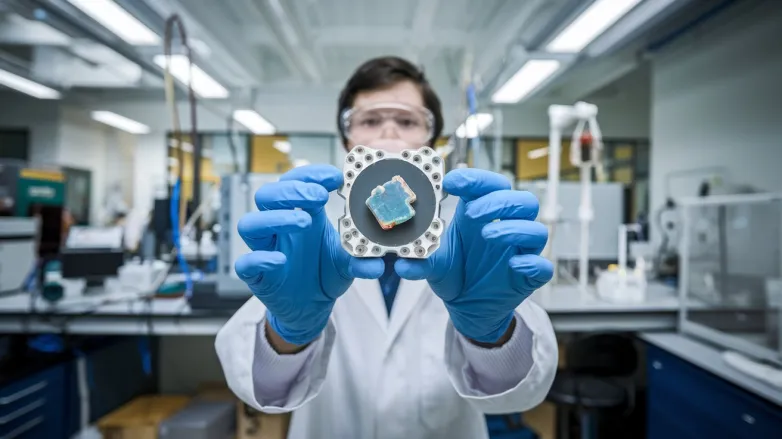Breakthrough Interface Design Boosts Perovskite Photodetector Efficiency
- Groundbreaking research at Guangxi University enhances perovskite photodetectors with fluorine materials, achieving 89.4% efficiency and remarkable stability, heralding a new era in high-performance devices!

Researchers at Guangxi University have made significant advancements in perovskite photodetectors (PDs) by utilizing interface engineering techniques. Their study introduces the use of fluorine-containing materials, specifically Tris(pentafluorophenyl)borane (BCF) and 2,3,5,6-tetrafluoro-7,7,8,8-tetracyanoquinodimethane (F4-TCNQ), to modify the NiOx hole transport layer. This modification enhances the crystallinity of perovskites, optimizes the Ni3+/Ni2+ ratio, and improves overall charge transport capabilities.
The modified detectors achieved an impressive external quantum efficiency (EQE) of 89.4% and demonstrated excellent performance metrics, including a low dark current density and high detectivity. Notably, these devices retained over 90% of their initial performance after one month in ambient conditions, underscoring the effectiveness of the F4-TCNQ:BCF modification. This research paves the way for further developments in high-efficiency, stable perovskite devices.
How do fluorine-based materials enhance perovskite photodetector performance and stability?
- Enhanced Crystallinity: Fluorine-based materials contribute to the improved crystallinity of perovskite films. This leads to more uniform grain structures, reducing defects and enhancing the electrical properties of the photodetectors. Higher crystallinity also ensures better light absorption and conversion efficiency.
- Optimized Charge Carrier Dynamics: The use of fluorinated compounds helps optimize the ratio of Ni3+/Ni2+ in the hole transport layer. This optimization plays a critical role in facilitating efficient charge transport and minimizing recombination losses, which are key factors for achieving higher device performance.
- Increased Stability: Incorporating fluorine-containing materials enhances the stability of perovskite photodetectors under ambient conditions. The chemical bonds formed with these materials are more robust, making the films less susceptible to moisture and heat degradation.
- Reduced Dark Current: The modification of the hole transport layer with fluorinated substances results in lower dark current density. This is crucial for improving the signal-to-noise ratio in photodetectors, allowing for better sensitivity in detecting low-intensity light signals.
- High Detectivity: The overall enhancements lead to high detectivity values in the modified detectors. High detectivity means that the devices can discern weak signals better, making them suitable for applications requiring high sensitivity, such as scientific imaging or remote sensing.
- Extended Operational Lifespan: The remarkable retention of performance metrics over prolonged periods, even under ambient conditions, indicates that fluorine-based modifications can prolong the operational lifespan of perovskite photodetectors.
- Interface Engineering Techniques: The successful application of interface engineering techniques using fluorinated materials demonstrates a promising approach to overcome some of the historical challenges associated with perovskite stability and performance. This approach paves the way for future research in optimizing other layers in photovoltaic devices as well.
- Potential for Scale-Up: The improvements facilitated by fluorine-based materials suggest the possibility for scalability in the production of perovskite devices, which is vital for commercial applications. The stability and performance longevity achieved mean that these materials could be integrated into larger-scale manufacturing processes.
- Expanded Application Range: Enhanced performance and stability through fluorination open doors for new applications in various fields, from telecommunication devices to biomedical sensors, where efficient and reliable light detection is crucial.
- Future Research Directions: The promising results encourage further exploration of other fluorine-containing materials and their combinations, which could lead to even greater enhancements in perovskite device technology. This ongoing research could unveil new functionalities or efficiencies that were previously unattainable.
Also read


